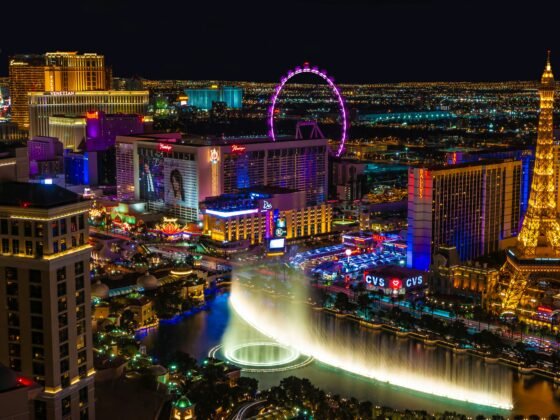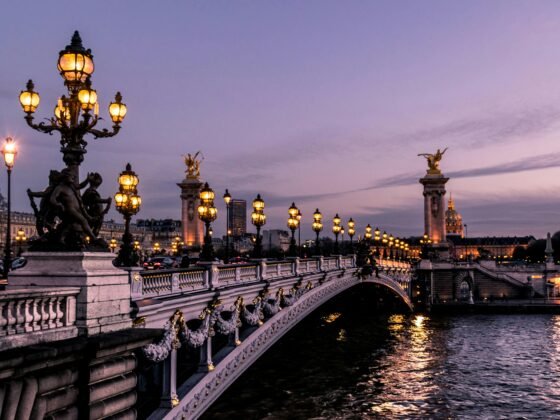Eastern Poland is home to the historic city of Lublin which has its roots as a 13th century trade center. Its strategic location at the crossroads of Russia, Lithuania and Ukraine has also blessed the city with a rich culture. The city has intriguing architecture thanks to the art movement nicknamed the ‘Lublin Renaissance’ and has twice served as Poland’s capital, albeit for short stints.
Explore Lublin Castle
Originally constructed in the 14th century, Lublin Castle today shows very little of its medieval origins. What stands here today is an ornate white-fronted neo-gothic masterpiece which replaced the rebuilt castle in the 19th century. History lovers will revel in exploring the history of this monument via the architecture and weaponry exhibits within. Established by king Casimir II the Just, beside the entrance to the historic Old Town district, Lublin Castle is one of the oldest royal residencies within Poland. The carefully preserved interior and exhibits can be seen within the Lublin Museum located in the castle.
Also on the site is the 13th century Chapel of Holy Trinity which is constructed in Romanesque style. The chapel itself is a must-visit thanks to the exquisite Byzantine wall paintings which date back to 1418.
Admire Lublin Cathedral
Visit the ornate cathedral in the heart of the city of Lublin. This 16th century architectural gem was originally devoted as a house of worship for the Jesuits. Take in the sumptuous trompe l’oeil frescoes created in the Baroque style by the renowned Moravian artist Jozef Majer and marvel at the beautiful 17th century altar, crafted from the wood of a black Lebanese pear tree. The cathedral is also home to the famous Black Madonna, which is said to have shed tears in 1945, making it both an article of faith and a wonder to behold. Be sure to investigate the acoustic vestry, purported to amplify even the lowest murmurs and the treasury located behind the chapel.
Discover Jewish Lublin
Pay a visit to the Jeszywas Chachmej Synagogue, in the heart of Jewish Lublin. Of the 38 synagogues originally operating in Lublin prior to World War II, it is the sole surviving building that still performs its original function. It is housed in an ordinary example of early 20th century architecture and has no features that would call it out as a place of worship to the casual eye. However, within, visitors may view a collection of photographs and texts in Hebrew, along with their associated ritual objects. It is a reminder of all that endures, and the strength of cultural traditions. The Jewish district is also home to the New Jewish Cemetery which is still in use, as well as the Old Jewish Cemetery.
Tour the Skansen Museum
Take a journey back through the ages when you tour the Skansen Museum, aka the Lublin Museum of Rural Life, which is a reconstruction of a traditional Polish village. The site is complete with a beautiful manor house, a number of buildings with fully decorated and functional interiors, an Orthodox church and a windmill. Enter through the carved wooden gate, which was designed by Stanislaw Witkiewicz in 1903. Today Skansen is the site of a number of fascinating cultural events and rotating educational displays.
Pay your respects at the sombre Majdanek
Now a museum, Majdanek was one of several Nazi concentration camps located in the region. While certainly not on the lighter side of the tourist route, the tales it tells are vital for all to understand. Only four months after its liberation following WWII, the camp was to become the first museum of its kind. It is also unique for another reason; unlike some of the other notorious camps, the Nazis made no attempt to hide the nature of Majdanek from the surrounding population.
Meet at the Old Town Hall
Travellers and architectural historians alike will enjoy a visit to Lublin’s Old Town Hall which lies at the heart of the city’s historic quarter around the Rynek. Along with a collection of other buildings in the city, the facades of which have been painstakingly restored, it provides an excellent example of period architecture and design—in this case, dating back to 1781 and the neoclassical period.
Wander the Historical Museum of Lublin
Pay a visit to the city’s Historical Museum to appreciate the local history and culture. Here, you’ll find photographs and displays of documents that give an account of Lublin’s long and varied history.
Image Credit; Szater











